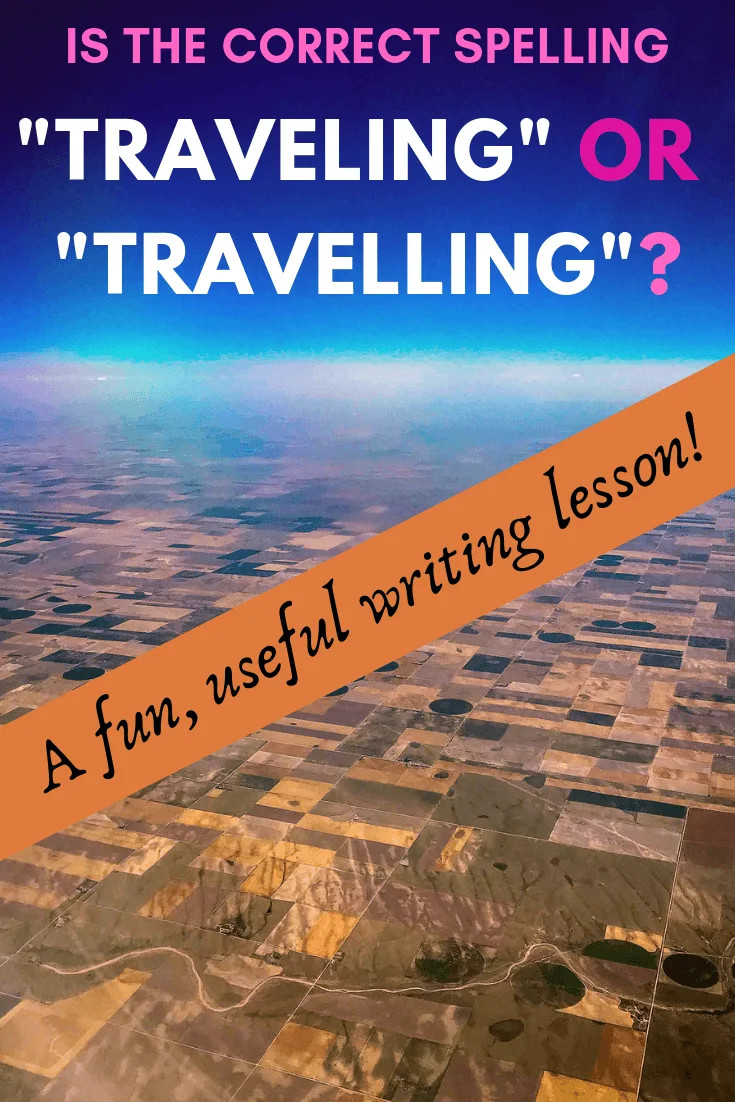One “L” or two? This is the perennial question that plagues writers worldwide when it comes to the words “traveling,” “travelled,” and “traveler.” If you’ve ever paused mid-sentence, unsure whether to type “traveling” or “travelling,” you’re not alone. This seemingly simple spelling difference is a tale of two continents, rooted in the fascinating world of geographical linguistics.
 Woman looking at mountain range, pondering the choice between traveler or traveller spelling.
Woman looking at mountain range, pondering the choice between traveler or traveller spelling.
The answer, quite simply, depends on where you are and who you’re writing for. Let’s embark on a linguistic journey to unravel the mystery of “traveling” versus “travelling” and ensure your spelling is always on point, whether you’re crafting a blog post, a travel grant application, or teaching English abroad.
Decoding the “Traveling” vs. “Travelling” Conundrum: US vs. British English
The core of the “traveling” or “travelling” debate lies in the distinction between American and British English spelling conventions. The United States, along with other regions adhering to American English spelling, champions the single “L” in “traveling,” “traveled,” and “traveler.”
Therefore, if your audience is primarily based in the US, or you’re writing for an American publication, “traveling” is unequivocally the correct spelling. Imagine writing for a New York-based travel magazine – “traveling” would be your go-to choice.
Conversely, British English, and its global counterparts, favor the double “L” – “travelling,” “travelled,” and “traveller.” So, if you’re writing for a UK audience or contributing to a British publication, “travelling” is the accepted norm. Think of crafting content for a London-based travel blog; “travelling” would be the appropriate spelling.
 Ornate carpets with repeating patterns, symbolizing the intricate world of travelling or travelling spellings.
Ornate carpets with repeating patterns, symbolizing the intricate world of travelling or travelling spellings.
This divergence isn’t arbitrary; it’s a historical linguistic split. While both spellings originate from the same root word “travel,” American English underwent spelling reforms in the 18th and 19th centuries, championed by figures like Noah Webster, to simplify and differentiate itself from British English. One such simplification was the reduction of double “L” to a single “L” in words like “traveling.”
Canada and the Commonwealth: Embracing “Travelling”
Just when you think you’ve mastered the rule, the linguistic landscape shifts slightly with Canada. Despite its geographical proximity to the US, Canada, as a member of the Commonwealth, predominantly adopts British English spelling conventions.
Therefore, in Canada, “travelling” is the standard spelling. If you’re writing for a Canadian audience or based in Canada, remember to double that “L.” The same “two L” rule extends to other Commonwealth countries, including Australia, New Zealand, and South Africa. So, for these regions, “travelled,” “traveller,” and “travelling” are all correct.
 Woman overlooking a mountain vista, representing the question of whether she is a traveler or traveller depending on location.
Woman overlooking a mountain vista, representing the question of whether she is a traveler or traveller depending on location.
Why “Teaching Traveling” Uses One “L”
This website, “familycircletravel.net,” much like “TeachingTraveling.com” mentioned in the original article, uses the single “L” spelling – “traveling.” This choice is deliberate and reflects the primary target audience: English speakers, with a significant portion being based in the United States.
Furthermore, consistency in branding and website name recognition plays a role. Using “traveling” aligns with common American English usage and ensures clarity for the majority of the intended readership.
 Bottle cap art chair, illustrating the author's travel experience and American English spelling preference.
Bottle cap art chair, illustrating the author's travel experience and American English spelling preference.
Navigating Mixed Audiences: When Context is Key
The real challenge arises when your audience is a mix of both American and British English speakers. In today’s globalized world, online content often transcends geographical boundaries, reaching readers from diverse linguistic backgrounds. So, how do you decide between “traveling” and “travelling” when your readership is diverse?
You have a couple of strategic options:
Option 1: Choose a Spelling and Maintain Consistency
Select either American or British English spelling and apply it consistently throughout your content. If you opt for this approach, and choose American English, you would use “traveling” across the board, even when quoting someone who might use “travelling.” This ensures uniformity and avoids potential confusion for readers accustomed to one spelling style.
However, this approach might subtly alienate a segment of your audience who are more familiar or comfortable with the other spelling.
Option 2: Tailor Spelling to Audience Context
This more nuanced approach involves adapting your spelling based on the specific context and the anticipated majority audience for a particular piece of content. For example, if you are writing a piece specifically for a UK-based publication or website, using “travelling” would be the most appropriate choice. Conversely, for a US-centric audience, “traveling” would be preferable.
This method demonstrates linguistic sensitivity and caters to audience expectations, enhancing reader experience and engagement. It acknowledges that language is not monolithic and adapts to different regional norms.
 Mountain vista in a national park, symbolizing travel across regions with different spelling conventions.
Mountain vista in a national park, symbolizing travel across regions with different spelling conventions.
A Clever Workaround: Avoiding “Traveling” or “Travelling” Altogether
When faced with a persistent dilemma, sometimes the most elegant solution is to sidestep the issue entirely. If the choice between “traveling” and “travelling” feels particularly fraught, consider rephrasing your sentences to avoid these words altogether.
For instance, instead of saying “I am a traveler,” you could write “I am someone who loves to travel” or “I am passionate about travel.” Similarly, instead of “traveling the world,” you could say “exploring the world” or “journeying across the globe.”
While this approach might not always be feasible, it offers a creative way to navigate the spelling quandary, particularly in shorter pieces of content where word choice flexibility is greater.
 Sunrise over a landscape, representing clarity and linguistic enlightenment regarding traveling and travelling.
Sunrise over a landscape, representing clarity and linguistic enlightenment regarding traveling and travelling.
The Takeaway: Audience-First Spelling
Ultimately, the decision between “traveling” and “travelling” hinges on understanding your audience. Who are you writing for? Where are they primarily located? What are their linguistic expectations?
Prioritizing your audience’s needs and preferences is paramount. While knowing your own spelling inclinations is helpful, effective communication prioritizes clarity and resonates with your readers.
So, embrace the fascinating duality of “traveling” and “travelling.” Recognize the geographical dance of these spellings, and confidently choose the version that best serves your audience. Happy writing, and happy travels!
 Text image summarizing the traveling vs travelling spelling rules with relevant hashtags.
Text image summarizing the traveling vs travelling spelling rules with relevant hashtags.
What are your experiences with the “traveling” versus “travelling” debate? Did you know this spelling rule, or was it a new discovery? Share your thoughts and questions in the comments below!
Do you have other grammar or writing topics you’d like us to explore? Let us know!
By [Your Name/Website Name]
Expert Content Creator at familycircletravel.net

